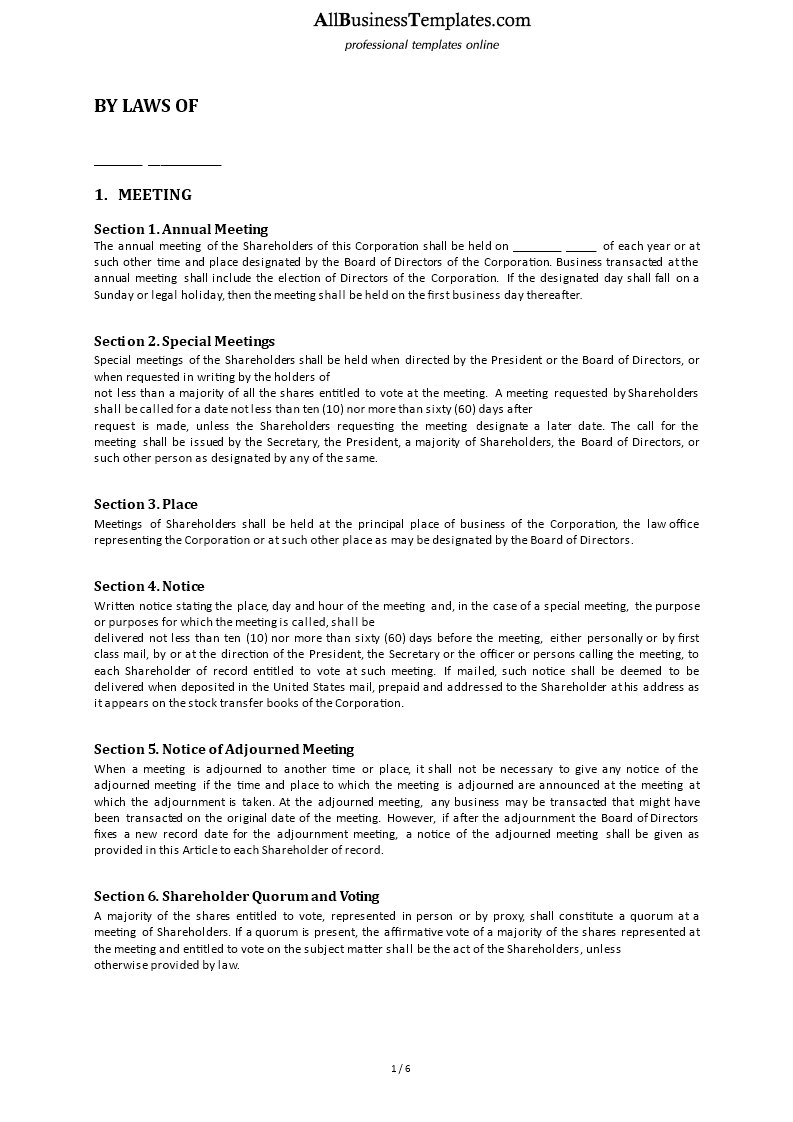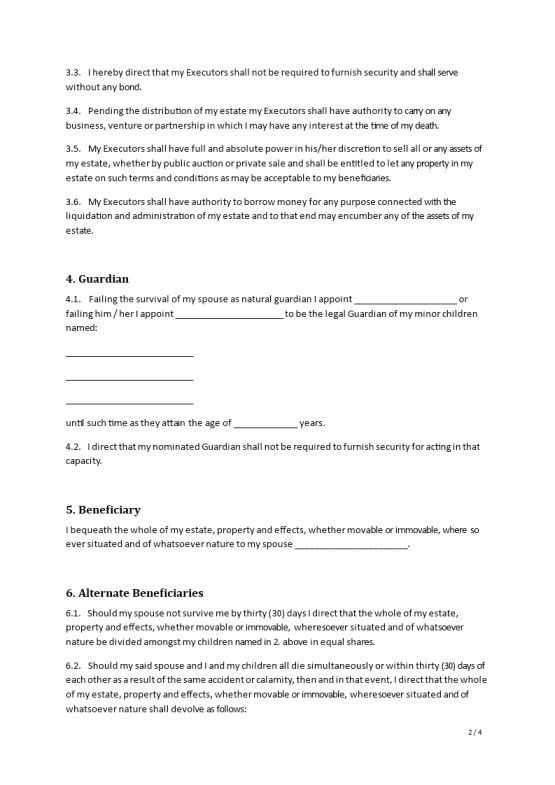By Laws Of.doc

I-Save, punan ang mga blanko, i-printa, Tapos na!
Searching for an MS Word template to create bylaws? In what ways are bylaws governed? We offer a MS Word bylaws template that you can customize to fit your organization's needs.
Mga magagamit na premium na format ng file:
.doc- Itong dokumento ay sertipikado ng isang Propesyonal
- 100% pwedeng i-customize
Legal Ligal
Searching for an MS Word template to create bylaws? In what ways are bylaws governed? We offer a MS Word bylaws template that you can customize to fit your organization's needs. It is a simple and straightforward document that will help you create a set of rules and guidelines for your group. Download this template now and get started!
A "Bylaws Template" is a preformatted document that provides a framework or structure for creating the bylaws of an organization. Bylaws are a set of rules and regulations that govern the internal operations and management of an entity, such as a corporation, nonprofit organization, homeowners association, or club. These rules are established to ensure that the organization functions smoothly, follows legal requirements, and defines the roles and responsibilities of its members, officers, and governing bodies.
A Bylaws Template typically includes the following key elements:
- Name and Purpose: The template starts with the name of the organization and a statement of its purpose or mission. This section outlines the fundamental goals and objectives of the entity.
- Membership: It defines the criteria for membership, including eligibility requirements, rights, and responsibilities of members. This section may also cover matters like membership dues and voting procedures.
- Meetings: Bylaws specify how and when meetings of the organization will be conducted. This includes details about regular meetings, special meetings, quorum requirements, and rules for decision-making.
- Board of Directors or Trustees: If applicable, the template outlines the composition and roles of the governing body, such as a board of directors or trustees. It may specify the number of directors, their qualifications, terms, and powers and duties.
- Officers: Bylaws typically describe the roles and responsibilities of officers, such as the president, vice-president, secretary, and treasurer. They may outline the election or appointment process for officers and the duration of their terms.
- Committees: If the organization has committees or subgroups, the bylaws template may include provisions for creating, managing, and dissolving these committees.
- Finances: This section covers financial matters, including the management of funds, budgeting, accounting procedures, and fiscal year information. It may also address financial audits and reporting.
- Amendment Process: Bylaws are not set in stone and can be amended when necessary. The template should outline the procedure for amending the bylaws, including the required majority vote or approval process.
- Dissolution: In the event the organization needs to dissolve or disband, the template should provide guidance on how assets will be distributed or disposed of in accordance with applicable laws and regulations.
- Conflict of Interest and Ethics: Bylaws may include a section addressing conflicts of interest, ethics, and codes of conduct that members, officers, and directors are expected to follow.
Bylaws templates serve as valuable starting points for organizations looking to establish their governing rules. However, it's crucial to tailor the template to the specific needs, structure, and legal requirements of the organization. It's recommended that organizations seek legal counsel or consult with experts in nonprofit law or corporate governance when creating or amending their bylaws to ensure compliance with local, state, and federal regulations.
In summary, the contents of bylaws typically include:
- Name and Purpose: The organization's name and its mission or purpose.
- Membership: Eligibility, categories, rights, and responsibilities of members.
- Meetings: Types, notices, quorum, voting, and procedural rules for meetings.
- Board of Directors/Trustees: Composition, duties, powers, and terms of the governing body.
- Officers: Titles, roles, election/appointment procedures, and responsibilities of officers.
- Financial Matters: Fiscal year, budgeting, accounting, auditing, and reporting procedures.
- Committees: If established, their purpose, composition, and responsibilities.
- Amendment Process: Procedures for amending the bylaws.
- Conflict of Interest and Ethics: Rules and codes of conduct for members, officers, and directors.
- Dissolution: Procedures for dissolving the organization and handling assets.
These elements serve as the foundation for governing an organization and provide clarity on its structure, operations, and decision-making processes. Specific details within each category can vary depending on the organization's type, size, and purpose.
Download this sample template now and use as a model for your own project. It's perfect to get you started in the right direction. Make sure to customize to fit your needs.
DISCLAIMER
Wala sa 'site' na ito ang dapat ituring na legal na payo at walang abogado-kliyenteng relasyon na itinatag.
Mag-iwan ng tugon. Kung mayroon kang anumang mga katanungan o mga komento, maaari mong ilagay ang mga ito sa ibaba.



